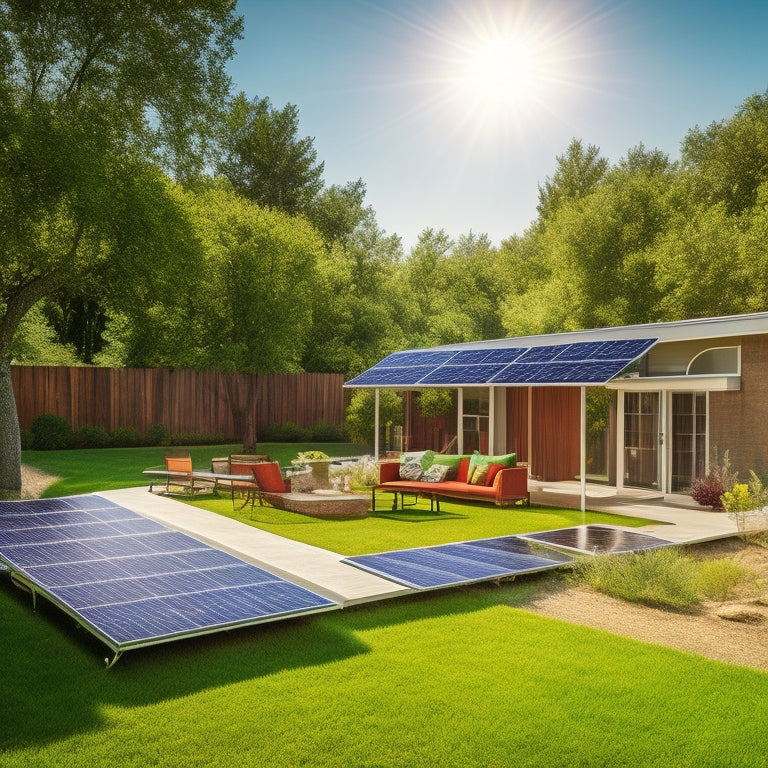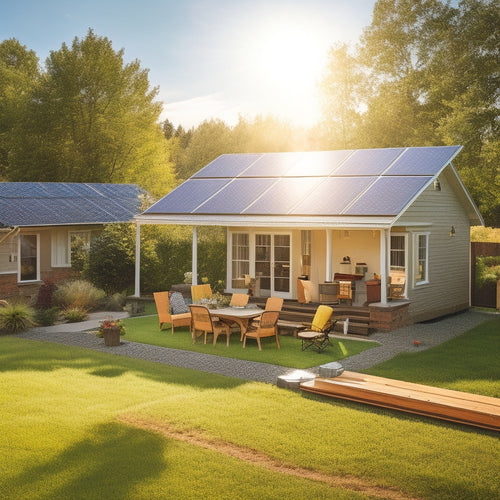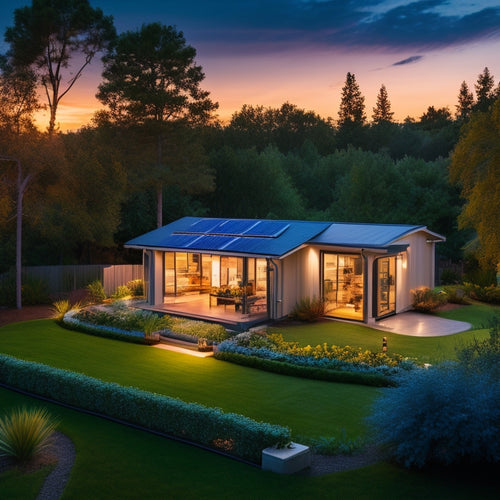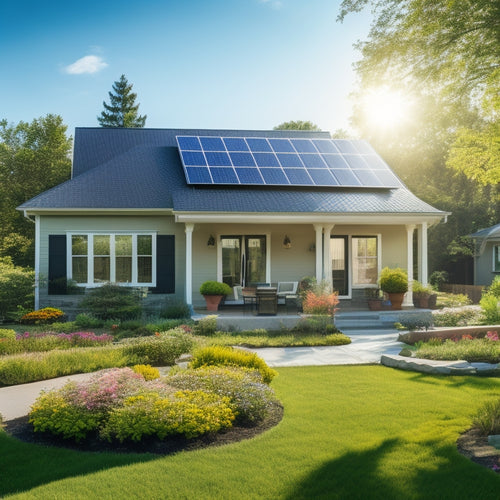
What Are the 5 Most Affordable Solar Power Systems
Share
You're looking for affordable solar power systems that can help you utilize renewable energy without breaking the bank. Top options include polycrystalline and thin-film panels, which offer lower upfront costs, and installation costs that range from $2.50 to $3.50 per watt. While high-efficiency panels may generate more power, scalable systems and durable components can minimize long-term maintenance costs. With solar incentives and financing options available, you can enjoy immediate savings on energy bills. Now, explore the specifics of each system and how they can benefit your unique energy needs.
Key Takeaways
- Thin-film solar panels offer a lower entry cost, but with reduced efficiency, making them a budget-friendly option for homeowners.
- Polycrystalline panels provide a balance between affordability and efficiency, making them a popular choice for residential use.
- DIY solar panel kits and self-installation can significantly lower labor costs, making solar power more accessible to those on a tight budget.
- Solar financing options allow for installations with little to no upfront cost, spreading the expense over time and enabling immediate savings.
- Systems with lower installation costs per watt, such as those with scalable designs, can offset initial investments and provide long-term affordability.
Top Budget-Friendly Options
Your quest for affordable solar power systems begins with identifying the top budget-friendly options. When it comes to solar panel types, you'll want to take into account monocrystalline and polycrystalline panels, which offer a balance of efficiency and cost-effectiveness.
Thin-film solar panels are another option, providing a more affordable entry point, although with slightly lower efficiency rates.
Installation costs are a significant factor in the overall affordability of a solar power system. You'll need to take into account the cost of the panels themselves, as well as the cost of installation, including labor and materials.
Look for systems with lower installation costs per watt, which can help offset the upfront investment. Additionally, take into account the size of the system you need, as larger systems often come with economies of scale.
When evaluating budget-friendly options, it's crucial to assess the total cost of ownership, including the system's warranty, maintenance requirements, and expected lifespan.
Best Value for Your Money
By the time you've narrowed down your options to the top budget-friendly solar power systems, it's vital to assess which ones offer the best value for your money.
You want to guarantee that your investment yields substantial returns in the long run. When evaluating the best value, consider the following key factors:
-
Efficiency and Performance: A system with high-efficiency panels and a well-designed installation will generate more power per dollar spent, resulting in higher investment returns.
-
Durability and Reliability: A system built with durable components and a strong warranty will provide long-term savings by minimizing maintenance and repair costs.
-
Scalability and Flexibility: A system that can be easily expanded or modified as your energy needs change will provide a better value in the long run.
Affordable Systems for Homes
Optimism about going green is on the rise, and homeowners are at the forefront of this revolution. You're likely considering solar power as a viable option to reduce your carbon footprint and energy bills.
When it comes to affordable systems for homes, you'll want to focus on the right solar panel types and installation costs.
Polycrystalline solar panels are a popular choice for residential installations due to their lower costs compared to monocrystalline panels. They still offer high efficiency rates, making them a great value for your money.
Thin-film solar panels are another affordable option, although their efficiency rates are slightly lower.
Installation costs vary depending on the system size, installation company, and local incentives. On average, you can expect to pay between $2.50 and $3.50 per watt, with a typical residential system ranging from 3 to 10 kilowatts.
This translates to a total installation cost of $7,500 to $35,000. While the upfront investment may seem steep, you'll benefit from significant long-term savings on your energy bills and a reduced carbon footprint.
Cost-Effective Energy Solutions
As you investigate affordable solar power systems, you're likely looking for cost-effective energy solutions that make a tangible impact on your wallet and the environment.
One of the primary benefits of solar power is the potential for considerable energy savings. By utilizing the sun's energy, you can reduce your reliance on traditional fossil fuels and lower your energy bills.
Some of the key benefits of cost-effective energy solutions include:
-
Solar incentives: Many governments offer incentives for individuals and businesses that invest in solar power, such as tax credits or rebates.
-
Reduced energy consumption: Solar power systems can considerably reduce your energy consumption, leading to lower bills and a smaller carbon footprint.
-
Increased property value: Installing a solar power system can increase your property value, making it more attractive to potential buyers if you decide to sell.
Solar Power on a Shoestring
With solar power becoming increasingly accessible, you can now capture the sun's energy without breaking the bank. You don't need to be wealthy to utilize the power of the sun, and solar power on a shoestring is more achievable than ever.
One way to make solar power more affordable is through solar financing options. These financing plans allow you to install a solar power system with little to no upfront cost, spreading the cost over time through monthly payments. This makes it possible for you to start saving on your energy bills immediately, rather than waiting until you've saved up enough for a full system.
Another cost-effective approach is DIY installation. While it may require some technical skill, installing your own solar power system can greatly reduce labor costs. You can purchase a DIY solar panel kit, which usually includes everything you need to get started, and follow the manufacturer's instructions to install it yourself.
Frequently Asked Questions
What Is the Average Lifespan of a Solar Power System?
You can expect your solar power system to last around 25-30 years, with solar panel efficiency decreasing by about 0.5% annually; regular maintenance helps minimize costs, ensuring peak performance and reducing maintenance costs over its lifespan.
Can I Install Solar Panels on a Rented Property?
You can install solar panels on a rented property, but you'll need to investigate renter options, such as portable systems or community solar programs, and negotiate lease agreements with your landlord to guarantee a mutually beneficial arrangement.
Do Solar Panels Work During Power Outages?
Isn't it ironic that solar panels can't power your home during outages, unless you're prepared? You need solar battery storage to keep the lights on; grid-tied systems alone won't cut it - they're designed to shut down for safety reasons, leaving you in the dark.
Are There Any Government Incentives for Solar Power?
You're likely eligible for government incentives, such as solar tax credits and renewable energy grants, which can greatly reduce your upfront costs, making your shift to solar power even more attractive and cost-effective.
Can I Sell Excess Energy Back to the Grid?
You're probably thinking you'll be stuck with excess energy, but ironically, you can actually profit from it! Through net metering benefits and energy buyback programs, you can sell your surplus back to the grid, offsetting your utility bills and putting money back in your pocket.
Conclusion
You've made it to the end of our list of the 5 most affordable solar power systems. By now, you're probably excited to start generating clean energy and saving on your electricity bills. Take the example of the Smiths, who installed a 3kW system for just $10,000 and now save around $500 per year. With the right system, you can enjoy similar benefits without breaking the bank. By choosing a budget-friendly option, you'll be utilizing the power of the sun in no time.
Related Posts
-

Steps to Prepare for Solar Installation
To prepare for solar installation, start by evaluating your current energy consumption and future needs to determine ...
-

Solar Power Backup Solutions During Outages
Solar power backup solutions guarantee you have reliable energy during outages, providing essential power when the gr...
-

Affordable Solar Panels for Home Use
Affordable solar panels offer you a smart way to cut down on energy costs while promoting sustainability. With govern...


